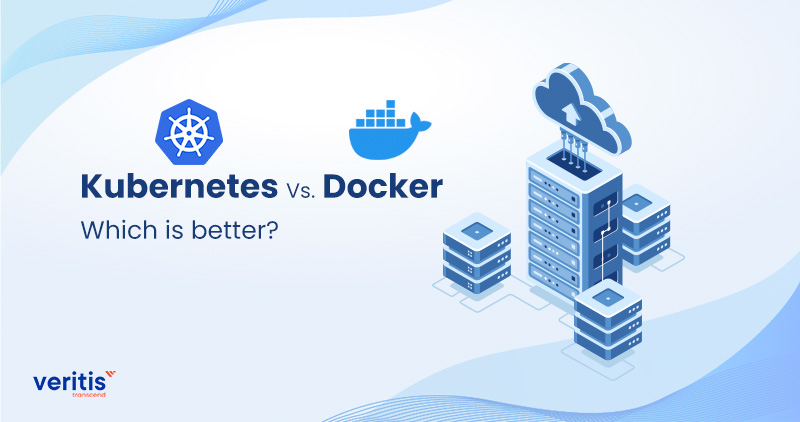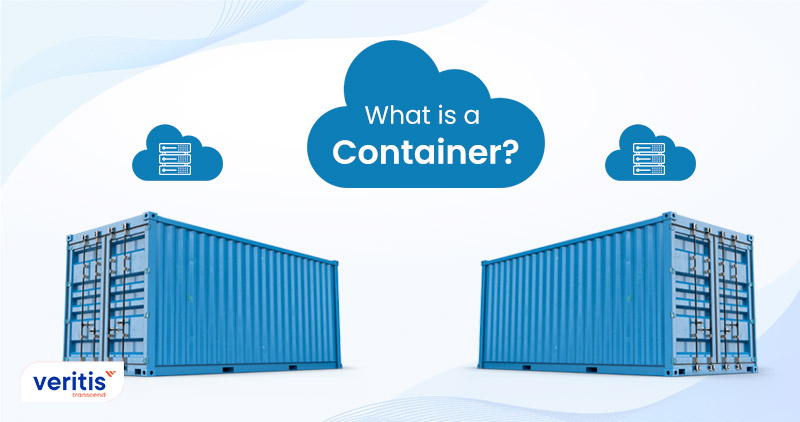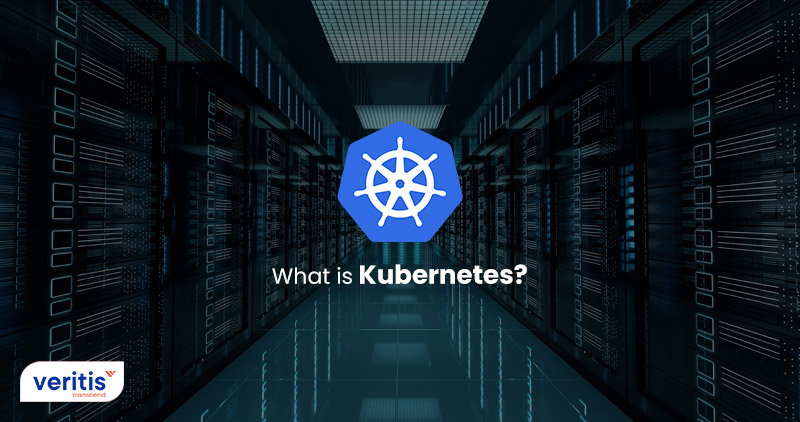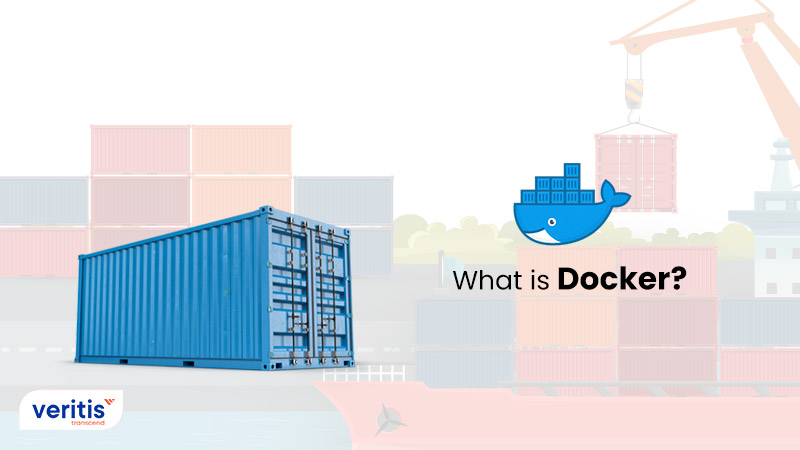
Containerization is one of the biggest things that is pushing the way forward. DevOps and project management favor the usage of containers for their multiple benefits, whether innovation or production. Be it their easy usage or reduction of unwanted maintenance hassles, containers have become a core element in our daily programs. While there are different types of containers, two major favored types of containers are avidly used by all: Kubernetes and Docker.
Both Kubernetes Vs Docker are different technologies, and they have many dissimilarities when they are compared. Yet, these two names crop up whenever containers are mentioned. This is primarily due to how reliant Kubernetes services and the Docker platform are and how widespread their usage is. Despite their fair share of differences, Kubernetes services and the Docker platform are often symbiotic when combined.
However, the question of which is better cemented after Kubernetes announced in 2021 that the open-source project would no longer support the Docker platform runtime option. Although Kubernetes didn’t shed its compatibility with Docker, the debate of Kubernetes vs. Docker continues to exist.
Useful link: 7 Key Containerization Benefits for Your IT Business
What is the difference between Docker and Kubernetes? In this blog, we shall explore that question after understanding each technology.
What is a Container?

An executable software unit is a container that bundles application code with its dependencies and makes it possible to execute in any IT environment. A container is independent and isolated from the host environment, which is often Linux. This isolation makes it easy to use or ‘portable’ across various IT platforms, including the Docker platform and Kubernetes services.
Comparing a container to a virtual machine (VM) might help you comprehend the notion of a container. Both are based on virtualization technologies. However, a VM uses hypervisor software to virtualize real hardware, whereas a container virtualizes an entire operating system.
With conventional virtualization, each virtual machine (VM) includes a complete copy of the guest operating system (OS), a virtual replica of the OS’s required hardware, and an application (and its associated libraries and dependencies). In contrast, a container contains the program and its libraries and dependencies. As a result, a container’s size is drastically reduced when a guest host isn’t there, making it small, quick, and portable. A container also automatically utilizes the host’s settings.
With the aid of containers, engineers can quickly create apps that function reliably across various distributed systems and cross-platform setups, including the Docker platform and Kubernetes services. In addition, the mobility of containers eliminates many disagreements between functional teams that arise from using different tools and software.
Because of this, they are especially well-suited for DevOps workflows, facilitating cross-environment collaboration between IT operations and development teams. In addition, containers, such as the Docker platform and Kubernetes services, are perfect for microservice architectures, in which applications are composed of loosely connected, more minor services since they are compact and portable.
Useful link: ‘Kubernetes-as-a-Service’ for Container Infrastructure
What is Kubernetes?

Users may easily install and manage software modules known as containers with Kubernetes, also known as Kubes or K8s. K8s, an open-source platform, has always been at the forefront of innovation. As a result, businesses utilize K8s more frequently to quicken software development and enhance scalability, resource efficiency, and time-to-market. Managed Kubernetes is called Kubernetes as a Service or KaaS.
Kubernetes services steer carefully through unfamiliar waters by optimizing software containers to meet unanticipated factors, embodying the spirit of its ship’s wheel-inspired emblem. Kaas handles all aspects of managing the lifespan of several software containers, including deployment and scalability.
Google released the Kubernetes services project as open source in 2014. As a result, over 15 years of Google’s expertise managing production workloads at scale are combined with the best-of-breed concepts and methods from the community in managed Kubernetes.
Thanks to Kubernetes services, you have a robust framework to execute distributed systems. It handles application scaling and failover, offers deployment patterns, and does more. One of the advantages of Kubernetes services is the ability to automatically mount a storage system of your choosing, including local storage, cloud infrastructure, and more.
Additionally, it offloads containers that don’t meet your user-defined health check parameters, restarts failing containers, and replacement managed Kubernetes containers. It also delays advertising failed containers to clients until they are prepared to serve. The technology’s ability to instantly mount a storage system of your choosing, such as local storage, public cloud providers, and more, is one of Kaas’s additional advantages.
A standard, all-encompassing PaaS (Platform as a Service) technology is not what Kaas is. However, managed Kubernetes offers some generally valuable features common to PaaS offerings because it operates at the container level rather than the hardware level. These features include deployment, scaling, load balancing, and the ability for users to integrate their tracking and alert notifications.
Although these default solutions are optional and pluggable, Kubernetes is not a monolith. It provides the building blocks for developing developer platforms and protects user flexibility and choice in critical situations. Kubernetes is more than just an orchestration tool. It does away with the requirement for orchestration. Furthermore, centralized control is not necessary. As a result, the Kubernetes system becomes more reliable and robust.
Useful link: How to Optimize Kubernetes Autoscaler to Better Business
What is Docker?

Developers may create, deploy, and execute containers with Docker, a commercial containerization platform and runtime. It has a client-server architecture with an API for automation and basic instructions.
Users may bundle programs into immutable container images by utilizing the Docker platform’s tools by authoring a Dockerfile and executing the necessary commands to generate the image using the Docker server. Of course, developers can construct containers even without Docker, but the Docker platform makes it simple. Any platform that supports containers, such as Kaas, Docker Swarm, Mesos, or HashiCorp Nomad, may be used to deploy and operate these container images.
The Docker platform offers a remote registry for sharing containers and an API for managing containers in image format. This technique benefits both system administrators and developers. Also, Docker platform files are often relatively tiny, encouraging quick delivery and speeding up the deployment of new application containers. However, there are some inadequacies with the Docker platform. Let’s observe some of them.
Containers use resources more effectively than virtual servers. However, because of overlay networking, the interaction between containers and the host system, and other factors, containers are targeted at performance overhead. Therefore, apply bare metal rather than containers if you want complete bare-metal performance. The Docker platform was developed to deploy server programs without a graphical user interface (GUI).
While there are a few inventive methods one may use to execute a GUI application inside a container, these solutions are, at best, adequate. Commonly, applications designed to function as a collection of intelligent microservices manage to maximize the benefits of containers.
On the other hand, the Docker platform’s advantage is its ability to understand app delivery by providing a simple packaging method. By design, when a container shuts down, all of the data inside of it disappears forever unless you store it somewhere else beforehand. There are methods for tenaciously storing data in the Docker platform, such as Docker Data Capacities. However, whether this test has yet to be handled smoothly is debatable.
As mentioned before, Kubernetes has ceased to support Docker’s runtime activity. Let’s understand why. Docker is a container, not a runtime for containers. This implies that the Docker platform sits on top of a container runtime to give users access to features and tools through a user interface. The Docker Shim runtime, which effectively served as a bridge between the two technologies and aided in communication, had to be supported and implemented by Kaas to support Docker as a runtime.
Kubernetes may still run and manage containers created with the Open Container Initiative (OCI); Docker’s image format enables you to utilize Dockerfiles and construct Docker images, even if Kaas no longer offers particular support for the Docker platform as a runtime.
Useful link: Top Five Docker Alternatives That Can Boost Your Productivity
Understanding the Kubernetes and Docker dynamic

Kubernetes vs. Docker is not the correct argument despite both having to do with containers. Docker is a container, while Kubernetes is a container orchestration platform. Using Kubernetes as a Service, you can control your ecosystem’s Kubernetes clusters and containers. But what continues to dog us is the choice one has to make: Kubernetes vs. Docker. Let’s delve into it.
With the help of the Docker platform, developers can quickly bundle apps into discrete, independent containers using the command line. Developers no longer worry about compatibility concerns while using those apps throughout their IT system. An application will function everywhere if it is tested on a single node.
To maintain high availability during spikes in demand, Kubernetes offers the orchestration of Docker containers, scheduling and automatically deploying them across IT systems. Kubernetes offers the advantages of load balancing, self-healing, automated rollouts and rollbacks, and operating containers.
Additionally, it incorporates a GUI for simplicity of usage. Therefore, it can make sense to deploy Kubernetes right now for businesses that want to scale their infrastructure in the future. Additionally, Kubernetes uses pre-existing workloads and containers for Docker users while tackling the challenges associated with scaling up.
Final thoughts
One can observe that Docker Vs Kubernetes are not at loggerheads but rather complementary. With their inclination to further their goals and each other’s, companies across the globe are using both rather than placing them poles apart.
This combined usage will benefit you and help you achieve your goals. However, using them together requires expertise, which Stevie Award winner Veritis has. Contact us with your requirements, and our expert team will customize a user-friendly solution combining Kubernetes services and the Docker platform.
Explore Best DevOps Tools Got Questions? Schedule A Call
[WPSM_AC id=14535]
Additional Resources:
- Top 10 DevOps Tools to Pick for Your Business
- How Agile and IT Service Management can Work Together?
- How to Enhance Security in the Multi-Cloud Era
- Hadoop vs Spark: All You Need to Know About Big Data Analytics
- ITIL vs DevOps: Can Both Concepts Work Together?
- Hadoop Vs. Kubernetes: Is K8s invading Hadoop Turf?